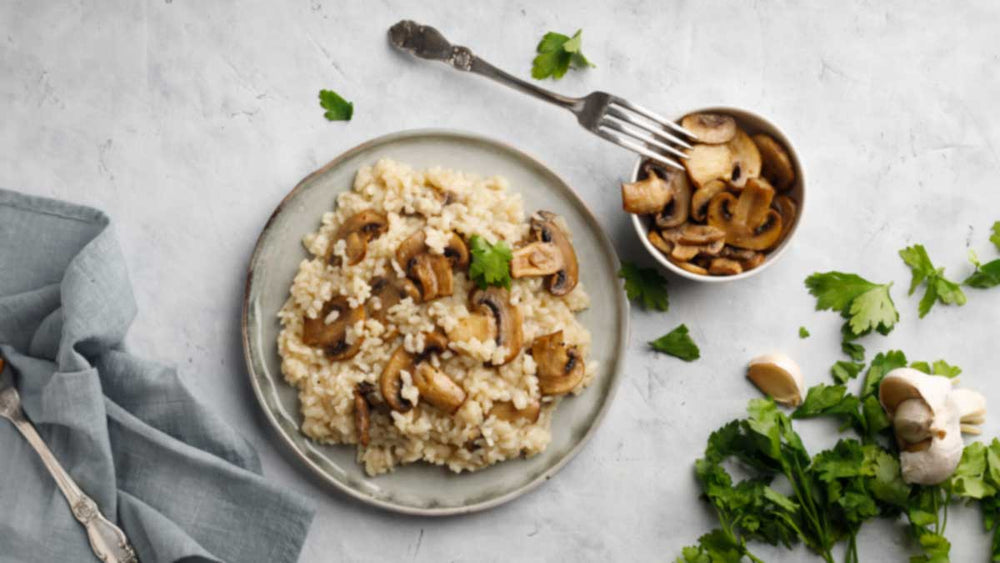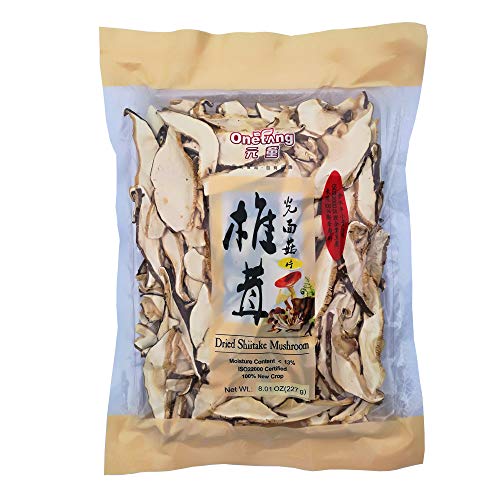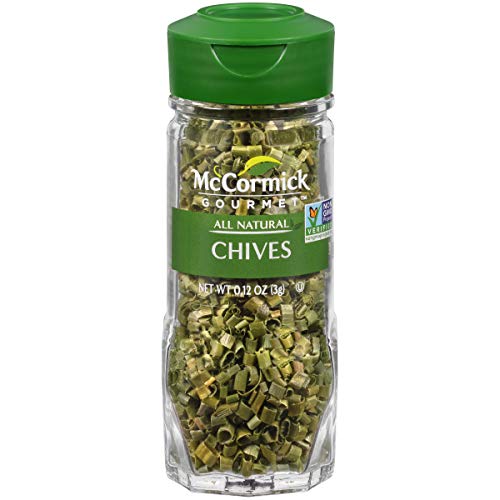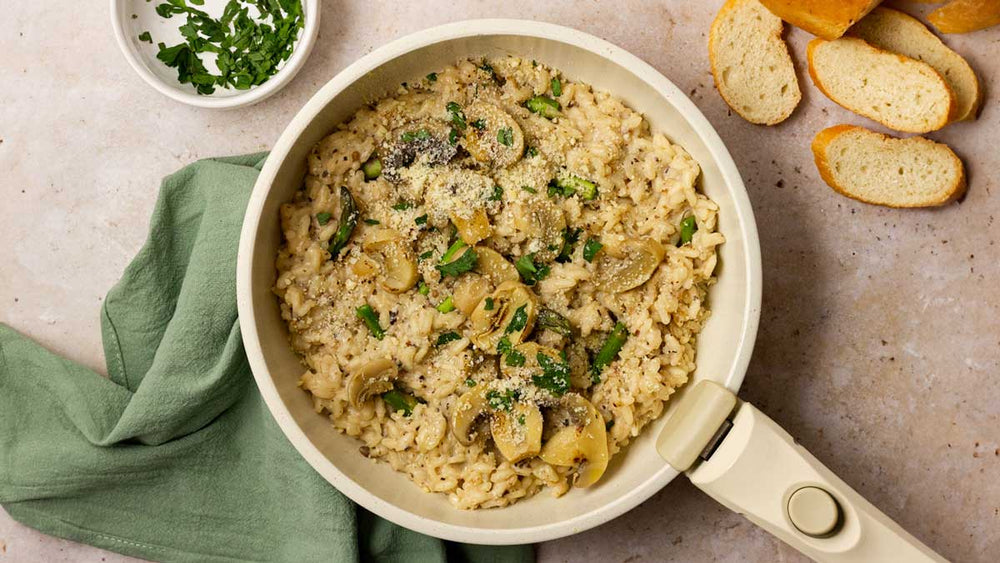Mushrooms: A Tasty, Sustainable Meat Alternative for Better Gut Health
My go-to phrase when talking about meatless foods is plant-based, but there is one notable exception—mushrooms! While we nutritionally classify mushrooms as vegetables, technically, they are fungi instead of plants. However, mushrooms contain all the benefits of a plant-based food and then some! From gut health to meat replacements, mushrooms can do it all.
Mushrooms: The Mighty Meat Alternative
Mushrooms are an excellent side dish for meals, but they really shine when used as the main attraction. They are very absorbent, meaning their flavor can be enhanced by sauces and marinades to please any palate. Here are some crowd-pleasing ways to use mushrooms:
- In place of beef: Mushrooms have a firm and savory texture, making it a great meat substitute. Fire up the grill to create a portobello burger or mushroom and vegetable fajitas, or break out the casserole dish for a mushroom “beef” stroganoff. Ordering pizza? Swap the sausage for shrooms!
- In soups and stews: Mushrooms hold their form when cooked in liquids. This makes them the perfect addition to plant-based soups, adding texture variety while making the dish more filling. Of course, they are absorbent, too, so your mushrooms are sure to embrace the flavors of the broth you are cooking them in.
- In curries and stir-fries: When you need a quick dinner option, one-pan dishes like curries and stir-fries are easy and require little cleanup. Mushrooms are adaptable to these meals as their high water content means they heat up quickly, but it also takes a lot to overcook them. Ready to taste-test? Try out our cauliflower fried rice with mushrooms!
Remember that while mushrooms make a great meat alternative to many dishes, they don’t offer much protein. Be sure to add another source of plant-based protein to your meals, such as this lentil and garbanzo bean mushroom patty. If you need more help, check out this article on meeting your protein needs.
Beyond the Plate: Unveiling the Power of Plant-Based Mushrooms for Gut Health
While not a protein powerhouse, mushrooms do have a whole host of nutritional and health benefits. One of these benefits is the positive impact of mushrooms on our gut health. Our gut is the casual term used to describe the ecosystem of microorganisms in our digestive system. We want our gut to contain more “good” microorganisms than “bad” ones in order to have better digestion, improved immunity, and reduced risk of chronic diseases. That’s where mushrooms come in!
Mushrooms and the Microbiome: Potential Benefits for Digestion and Immune Function
Consuming probiotic foods has been shown to help improve the ecosystem in our gut and create more of those “good” microorganisms and less of the “bad” ones by protecting our gut from harmful bacteria and fungi. That’s right, fungi! But not the same type of fungi as mushrooms…Mushrooms are a type of fungi that have prebiotic properties, meaning they act as a fuel or food source for those probiotics. So essentially, eating wanted fungi (mushrooms) can help fight off unwanted fungi that may cause an infection or other harm to our bodies.
Prebiotics have other benefits, too. When our body breaks down prebiotics, they become short-chain fatty acids (SCFAs). SCFAs then travel throughout the body to perform a variety of functions, such as fighting inflammation, promoting GI motility, and supporting blood glucose control. One type of SCFA is called butyrate, and this acid has been shown to help reduce colon cancer risk. Talk about mighty, indeed!
Mushrooms are also a great source of dietary fiber. This does vary by type of mushroom, but 100g of shitake mushrooms contains 4.2g of fiber, and 100g of oyster mushrooms contains 2.8g of fiber. Consuming a high-fiber diet is a key component of overall GI health.
Mushrooms: A Sustainable and Delicious Choice
Mushrooms aren’t just beneficial for our bodies, they are also healthy for the planet! Mushrooms are essentially a recycled food. Producers are able to use byproducts of other agricultural products as compost or a medium by which to start growing the tasty fungi. In addition, mushrooms require less land, water, and electricity to be harvested than meats and most other vegetables.
According to the American Mushroom Institute, one acre of land can produce one million pounds of mushrooms! Mushrooms can be grown year-round in most climates across the United States. This low-maintenance production makes it easier to shop for mushrooms locally, reducing the amount of CO2 used in getting them from farm to table.
We have just scratched the surface of the power of mushrooms on our plate and our gut health. No matter your reasoning for incorporating mushrooms into your diet, you will reap a reward. After all, mushrooms are a delicious, health-food champignon!
- FoodData central (2021) Mushrooms: oyster. From USDA.gov. Retrieved August 12, 2024, from https://fdc.nal.usda.gov/fdc-app.html#/food-details/1999627/nutrients.
- FoodData central (2021) Mushrooms: shiitake. From USDA.gov. Retrieved August 12, 2024, from https://fdc.nal.usda.gov/fdc-app.html#/food-details/1999628/nutrients.
- Hemarajata, P., & Versalovic, J. (2013). Effects of probiotics on gut microbiota: mechanisms of intestinal immunomodulation and neuromodulation. Therapeutic advances in gastroenterology, 6(1), 39–51. https://doi.org/10.1177/1756283X12459294
- McLoughlin, R. F., Berthon, B. S., Jensen, M. E., Baines, K. J., & Wood, L. G. (2017). Short-chain fatty acids, prebiotics, synbiotics, and systemic inflammation: a systematic review and meta-analysis. The American journal of clinical nutrition, 106(3), 930–945. https://doi.org/10.3945/ajcn.117.156265
- Sustainability (n.d.). From American Mushroom.org. Retrieved on August 12, 2024, from https://www.americanmushroom.org/main/sustainability/.
- Thursby, E., & Juge, N. (2017). Introduction to the human gut microbiota. The Biochemical journal, 474(11), 1823–1836. https://doi.org/10.1042/BCJ20160510






















Comments
Join The Conversation...